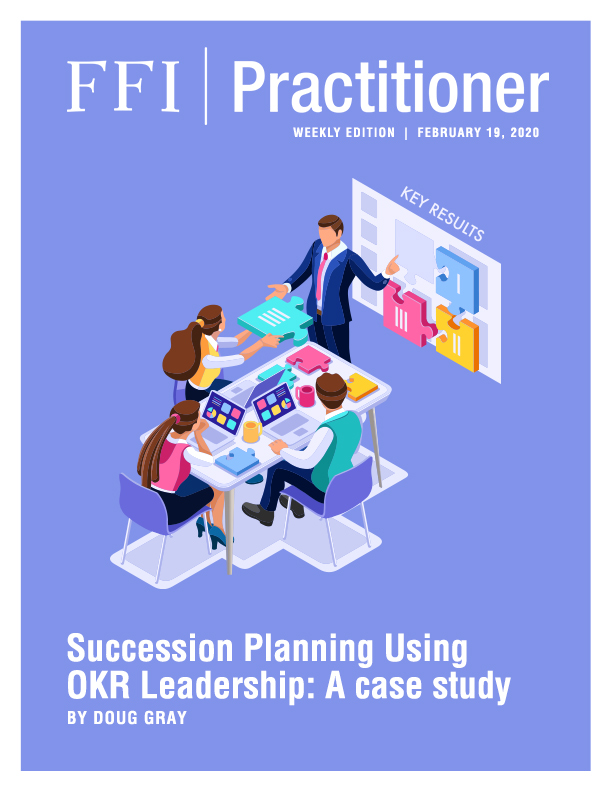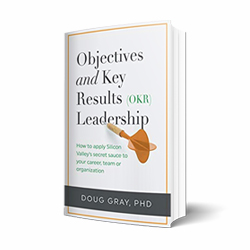A case study

“You’re looking at it. I’m all we’ve got.”
This short article discusses what OKR leadership is and how it might be able to help your clients with their succession planning.1
Background
Succession Planning is often defined as a process for identifying and developing the next generation of key leaders. The goal of succession planning in family-owned businesses is to perpetuate legacy and assets over generations.

Case study
Rick (age 54) started his retail company in the South Eastern U.S. from his home office. He now has 10 fulltime employees and 25 contractors providing over $20 million in sales revenue per year. Rick has two children, John (age 32) and Kris (age 30), who are interested in managing the business one day. Rick has provided one ownership share and a generous salary to each of them.
Sidebar
I was hired by Rick to accelerate the succession planning process and to help the family prosper across generations. To achieve this ambitious goal, I decided to implement the OKR approach.
The first Key Result (KR1) was to assess the strengths, weaknesses, blind spots, and hidden talents of Rick, John, and Kris within 30 days. To accomplish this, I conducted interviews with these three business leaders, with their spouses, and with five senior managers. Then I provided confidential individual assessment summaries to Rick, John, and Kris.
The second Key Result (KR2) was to conduct a series of family business meetings, up to 12, in the next 24 months. The focus of each meeting was defined by different family or business needs. For instance, some meetings included only Rick, John, and Kris. Some meetings included Rick, John, Kris, and their spouses. Some meetings included Rick, John, Kris, and their five senior managers.
“Succession planning can be helped by OKR (Objective and Key Results) Leadership – a management methodology that helps people focus effort on the same important issues throughout their organization.”
The third Key Result (KR3) was to reduce complexity by defining rules for each role—as a family member, business manager, and/or business owner. These three roles often overlap and can lead to conflict. We developed clarity and written rules for each role, e.g., decision-making, communication, conflict management, schedules, milestones, evaluation, professionalism, procedures, public behavior, and gossip. As Rick’s company matured, those rules needed to be written down to decrease verbal inconsistencies.
The fourth Key Result (KR4) was to design a transfer of assets over the next 10 years that guaranteed a “fair and equitable distribution over time” to John and Kris. That process required business valuation, asset valuations, and mutually acceptable terms for the first and second generations. The proposed asset transfer must have included guaranteed compensation for the founders, Rick and his wife, from protected assets that generated interest at minimal risk, according to state and federal laws. To achieve this, I worked with their attorney and accountant to develop a gradual wealth transfer process that worked.

As I worked with this client, if found that OKR helped organize this process and offer this case as an example to other advisors who might also want to use this methodology.
References
1 OKR (Objectives and key results) is a framework for defining and tracking objectives and their outcomes. The development of OKRs is generally attributed to Andy Grove the “Father of OKRs”, who introduced the approach to Intel during his tenure there and documented this in his 1983 book High Output Management.[1]




